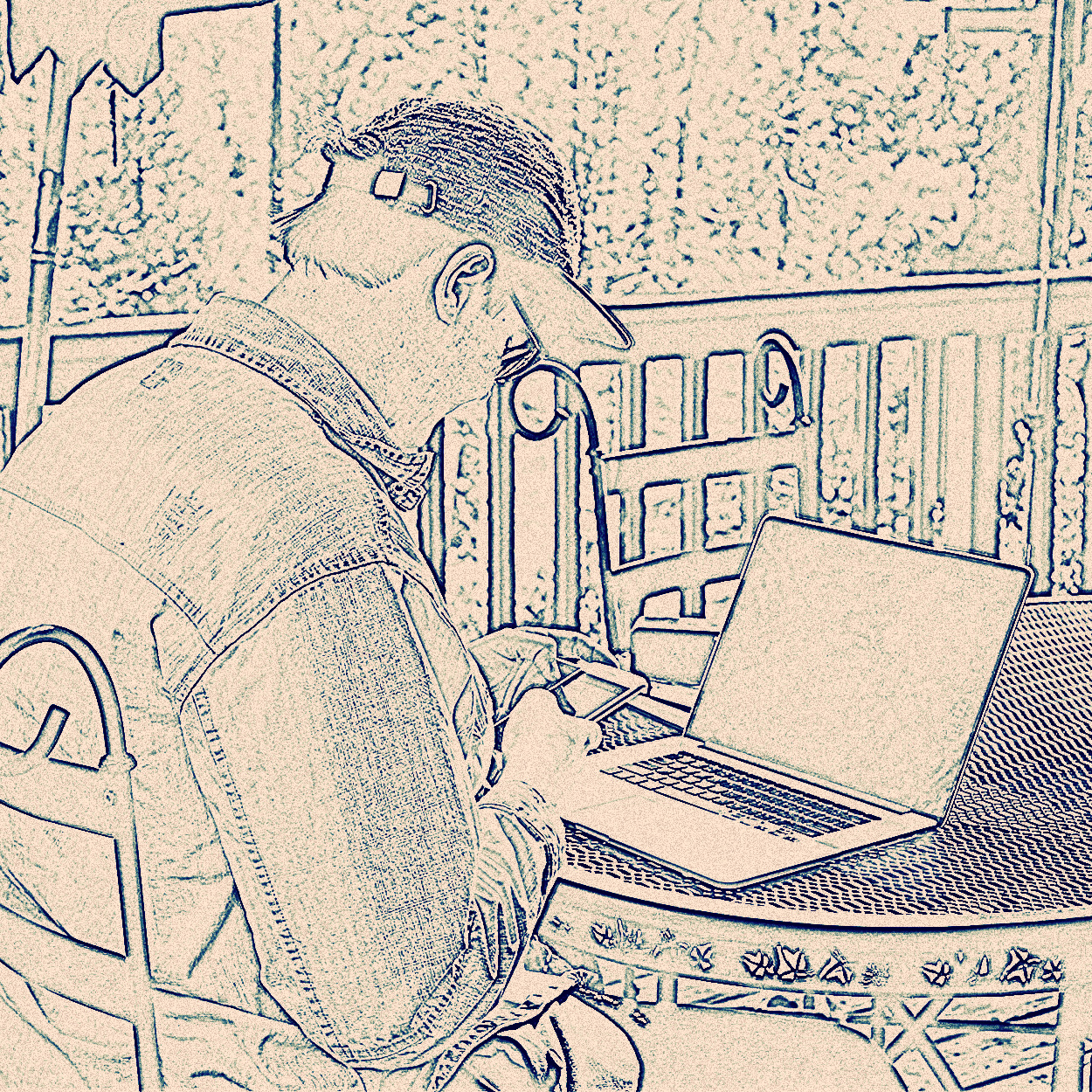In the 19th century, in a region teeming with religious fervor, a man emerged claiming to be the herald of a new religious era. Born into a fragmented religious landscape, he was destined to reinvigorate one of the world’s major religions, restoring it from its fall. With deep convictions about the need for revelation, he rallied followers who saw in him the fulfillment of prophecy. Many were surprised by his claims, with the religious establishment rejecting and persecuting him, but others found in his teachings echoes of their own beliefs and anticipations. I’m writing, of course, of Hazrat Mirza Ghulam Ahmad, the founder of the Ahmadiyya Muslim Community.
An Egyptian government official once told the future President of The Church of Jesus Christ of Latter-day Saints, Howard W. Hunter, that if a bridge between Islam and Christianity is ever to be built, it will need to be built by the Church of Jesus Christ. And while there are many similarities between Latter-day Saints and Muslims in general, there is certainly a striking similarity with the Ahmadiyya community.
Ahmadiyya In the History of Islam
Born around AD 570 in Mecca, Muhammad belonged to the Quraysh tribe, guardians of the Kaaba, a center of worship filled with tribal gods’ images. Although illiterate, Muhammad, influenced by surrounding monotheistic faiths, received revelations from an entity claiming to be Angel Gabriel. These revelations became the Quran. With converts like his wife, Khadija, cousin Ali, and friend Abu-Bakr, the religion spread. Yet, upon Muhammad’s death in AD 632, disagreements arose about succession, dividing his followers into Sunnis and Shi’as. Sunni Muslims followed the sunna or customary practice of Muhammad, while Shi’as believed leadership should reside within Muhammad’s bloodline. Today, Sunnis represent roughly 87% of global Muslims, while Shi’as dominate in nations like Iran and Iraq. Both faiths are complex and varied.
The History of the Ahmadiyya
In 1889, Hazrat Mirza Ghulam Ahmad founded the Ahmadiyya Muslim Community in India with an initial group of 40. His mission was to restore a deep connection between God and humanity, emphasizing love, sincerity, and a pure understanding of God’s unity. Now present in over 207 countries with tens of millions of members, the Ahmadiyya Community has established more than 15,000 mosques and numerous educational and healthcare facilities. After facing persecution in the region where they were founded, their headquarters are now in Great Britain.
Ahmadis align with core Islamic beliefs, like the five pillars of Islam. But there are distinct differences. They believe the Caliphate is a spiritual rather than political entity. They interpret “jihad” differently, preferring intellectual and written advocacy (“jihad of the pen”) over violence. They are widely seen by Muslims as being outsiders or not Muslim. The community’s global footprint includes prominent mosques and centers from London to Chicago, always echoing their motto: “Love for all, hatred for none.”
Our Similarities
In a recent visit to the Baitul Futuh Mosque in Morden, South London, a remarkable resemblance between the Ahmadiyya community and The Church of Jesus Christ of Latter-day Saints emerged. Behind the worship areas of the mosque, the Ahmadi have built a large gymnasium, complete with basketball hoops, which is also used for large meetings and community events. As I spoke with Mr. Fareed Ahmad, the National Secretary for External Affairs of the Ahmadiyya community, the commonalities became more pronounced.
Dedication to Missionary Work: Both communities emphasize spreading their faith. Ahmadiyya missionaries, trained as Imams at their theological seminary, go door-to-door, much like Latter-day Saint missionaries. Their conversion philosophy aligns with the Quranic teaching, “There shall be no compulsion in religion” (2:256), indicating a faith choice made out of genuine belief, not force.
Personal Revelation: The Ahmadi believe in 124,000 prophets visiting various peoples. This is reminiscent of Ammon’s words in Alma 26:37 and Nephi’s revelation in 2 Nephi 29:12, emphasizing that God is mindful of every people and speaks to them.
Jesus’ Ministry: Ahmadis, like most Muslims, recognize Jesus as a prophet. Their unique belief is that after surviving the crucifixion, Jesus traveled to Kashmir to continue his ministry. This resonates with Latter-day Saints’ belief about Jesus ministering to various groups, as illustrated in 3 Nephi 16:1-3.
When this subject came up, Mr. Ahmad had enough familiarity with our beliefs to know that The Book of Mormon is an account of a visit to the House of Israel.
Community Infrastructure and Resources: Both communities offer substantial resources for members and seekers. The Ahmadi mosque in London, capable of accommodating 5,000 worshippers, also houses a library with materials on comparative religion, including copies of The Book of Mormon. There’s also a broadcasting center offering continuous content on Islam and the Ahmadiyya community, similar to the Latter-day Saints’ efforts in media outreach.
History and Heritage: The Ahmadis, with their 20 mosques in England and the oldest mosque in the US, emphasize their heritage, much like the Latter-day Saints. Mr. Ahmad’s connection to the first Ahmadi missionary to England and his role on the National Committee for the UK mirrors the Latter-day Saints’ emphasis on lineage and service.
Ongoing Prophetic Guidance: A cornerstone of both communities is the belief in continuing revelation through prophets. Ahmadis believe Mirza Ghulam Ahmad to be the Promised Messiah and one who partakes of the prophetic spirit, indicating that divine guidance didn’t end with Muhammad. Similarly, Latter-day Saints believe in an ongoing line of prophets leading the Church, starting with Joseph Smith up to the present day. For both, this belief signifies a living faith, continuously guided and refreshed by divine instruction.
While the nuances of both faiths are complex and varied, it’s clear that both the Ahmadiyya and Latter-day Saints have foundational similarities in their approaches to missionary work, belief in prophetic guidance, and community involvement. Such parallels are a testament to the diverse tapestry of global faith, drawing unexpected connections between communities.
A History of Persecution
The Ahmadiyya community, founded by Hazrat Mirza Ghulam Ahmad, has experienced significant persecution since its inception, especially in countries where their beliefs deviate from mainstream Islamic views. Much like some in mainstream Christianity question the Christianity of The Church of Jesus Christ of Latter-day Saints, many traditional Muslims reject the Ahmadiyya as genuine Muslims due to their belief in post-Muhammad revelation.
The persecution is particularly intense in Pakistan, where Ahmadis are legally barred from identifying as Muslims, calling their worship places ‘mosques,’ or engaging in proselytization, and meeting houses are routinely vandalized. Simple acts, such as offering the standard Islamic greeting, can result in imprisonment. The state-sponsored persecution escalated in the 1970s under the leadership of Zulfikar Ali Bhutto, influenced by Saudi pressures. His successor, General Muhammad Zia ul-Haq, intensified these repressions. Blasphemy laws under Zia’s regime made practicing the Ahmadi faith punishable by death, with vigilante executions often overlooked or even facilitated by law enforcement.
The persecution has transcended borders. In Indonesia, the world’s largest Muslim-majority nation, Ahmadis face violence incited by groups like the Islamic Defenders Front. Disturbingly, the first Ahmadi Muslim was killed due to his faith in the UK in 2016. An alarming projection by Ahmadi leaders suggests that if intolerance continues against the Ahmadi, other minority groups might soon face similar persecution. Live together with mutual admiration and respect.
The Ahmadiyya community actively raises awareness about their plight. In 2016, the UK House of Commons held a debate addressing the state-sponsored persecution of Ahmadis in Pakistan, acknowledging their contribution to UK society and voicing concerns for their safety in their homeland and other countries.
The parallels between the Ahmadiyya and Latter-day Saints communities are evident. Joseph Smith, the Latter-day Saints founder, championed religious freedom and tolerance, emphasizing the intrinsic rights of individuals to their beliefs as long as they didn’t infringe on civil liberties. Both communities, despite being minority factions in their respective religious traditions, have faced prejudice and persecution.
In drawing parallels, Elder Russell M. Nelson, from the Latter-day Saints, once stated how important it is that we live together with mutual admiration and respect, regardless of religious differences. Given the shared histories and values of the Ahmadiyya and Latter-day Saints, building bridges of understanding seems more than achievable. Echoing the sentiments of an Ahmadi leader, both communities continue to “live in hope.”
References
Ahmadiyya Muslim Community. About us. Retrieved June 15, 2018 from https://www.ahmadiyya.us/about-ahmadiyya-muslim-community
Balzani, Marzia. 2010. Dreaming, Islam and the Ahmadiyya Muslims in the UK. History and Anthropology, 21. 3. 293-305.
Berberian, Linda J. 1987. “Pakistan Ordinance XX of 1984: International Implications on Human Rights.” Loyola of Los Angeles International and Comparative Law Review, 9, 661-692.
Burhani, Ahmad Najib. 2014. Hating the Ahmadiyya: the place of “heretics” in contemporary Indonesian Muslim society. Contemporary Islam, 8, 2. pp 133–152
Dahl, Larry E., and Cannon, Donald Q. eds. (1997). Encyclopedia of Joseph Smith’s Teachings. Salt Lake City: Deseret Book.
Dawood, N. J. 1990. Introduction. The Koran. New York: Penguin.
Hopfe, Lewis M. 1983. “Islam.” Religions of the World. New York: Macmillan.
Hunter, Howard. 1979. “All are alike unto God.” BYU Speeches of the Year.
Hanson, John. 2007. Jihad and the Ahmadiyya Muslim Community: Nonviolent Efforts to Promote Islam in the Contemporary World. Nova Religio: The Journal of Alternative and Emergent Religions,11(2), 77-93. doi:10.1525/nr.2007.11.2.77
Mehmood, Rabia. 2012. “Police demolish Ahmadi worship place minarets in Kharian.” Retrieved June 15, 2018, from https://tribune.com.pk/story/406708/police-demolish-ahmadi-worship-place-minarets-in-kharian/
Moore, James. 2015. “The Sunni and Shia Schism: Religion, Islamic Politics, and Why Americans Need to Know the Differences.” The Social Studies. 106, 226–235
Nelson, Russell M. 2002. “Blessed are the peacemakers.” Retrieved June 1, 2018 from https://www.lds.org/general-conference/2002/10/blessed-are-the-peacemakers?lang=eng
Nigosian, Solomon Alexander. 2004. Islam. Bloomington: Indiana University Press.
Parliamentary Debate. 2016. The persecution of Ahmadiyya Muslims and other Religious Minorities in Pakistan. Ahmadiyya Muslim Community UK: London.
Peterson, Daniel C. 2018. “Understanding Islam.” Retrieved May 3, 2018 from https://www.lds.org/ensign/2018/04/understanding-islam?lang=eng
Qadir, Ali. 2015. When heterodoxy becomes heresy: Using Bourdieu’s concept of Doxa to describe state-sanctioned exclusion in Pakistan. Sociology of Religion 76:2 155-176.
Robinson, Francis. 1990. Ahamad and the Ahmadiyya. History Today. June, 1990.
Sedgwick, Mark. 2000. Sects in the Islamic World. Nova Religio: The Journal of Alternative and Emergent Religions 3, 2: 195-240.
Sedgwick, Mark. 2007. Jihad, Modernity, and Sectarianism. Nova Religio: The Journal of Alternative and Emergent Religions, 11(2), 6-27. doi:10.1525/nr.2007.11.2.6
Suhartono, Muktita and Callimachi, Rukmini. (2018). “Indonesia Church Bombings Carried Out by Family With Children in Tow.” Retrieved May 14, 2018 from https://www.nytimes.com/2018/05/13/world/asia/indonesia-church-suicide-bomber.html

















